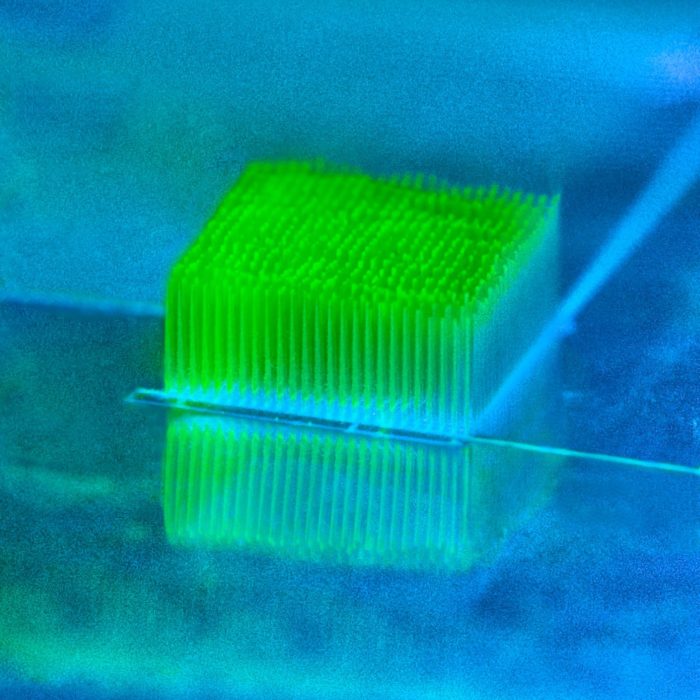Mar 10 2022
Using Bacteria to Create Electricity
 There are many ways to generate energy, and as we try to wean ourselves off of fossil fuels researchers are exploring how to improve and expand upon our options. One category of energy production is bio-energy, deriving energy from a biological source. Currently this mostly comes in the form of biofuel. Plants evolved ways to make energy from sunlight billions of years ago, in the process of photosynthesis. The captured sunlight is essentially stored as high-energy molecules, and those molecules can be converted into other high energy compounds, like ethanol, that can then be burned as fuel.
There are many ways to generate energy, and as we try to wean ourselves off of fossil fuels researchers are exploring how to improve and expand upon our options. One category of energy production is bio-energy, deriving energy from a biological source. Currently this mostly comes in the form of biofuel. Plants evolved ways to make energy from sunlight billions of years ago, in the process of photosynthesis. The captured sunlight is essentially stored as high-energy molecules, and those molecules can be converted into other high energy compounds, like ethanol, that can then be burned as fuel.
The problem with growing and harvesting biofuel is that it is inefficient. The amount of energy produced per unit of land is lower than other forms of energy, arable land is in short supply and will only get shorter as our population grows. Further, the process uses a lot of energy and while we can generate net energy through biofuels, the ultimate yields can be quite low. For these reasons I don’t think biofuels will ever become a major contributor to our energy infrastructure. However, it will likely have a niche, if not to power cars than in industry, which also needs to be fed high-energy compounds for many processes. There are also opportunities to use as feedstock for biofuels organic matter that would otherwise be waste. Researchers are also working on growing microbes in vats to improve land efficiency, or growing plants in the ocean to use as feedstock. These methods will help, but we will still never be running the world on biofuels. The numbers just don’t add up.
The technology, however, continues to advance and will likely serve some roll. One recent study examines how to increase the energy production from photosynthesis using cyanobacteria. The cyanobacteria are not creating biofuel, but rather electrons are taking directly from their photosynthesis to produce electrical current – a biological solar cell. This technique is not new, but is highly inefficient and not near to theoretical potential. What the researchers did was 3D print a micropillar array on which to grow the cyanobacteria, like a “mini-city” with rows of tall skinny buildings. This provides a great structure on which the bacteria to grow, and allows for them to access sunlight to undergo photosynthesis. The authors write:
When wired to the cyanobacterium Synechocystis sp. PCC 6803, micropillar array electrodes with microbranches exhibited favourable biocatalyst loading, light utilization and electron flux output, ultimately almost doubling the photocurrent of state-of-the-art porous structures of the same height. When the micropillars’ heights were increased to 600 µm, milestone mediated photocurrent densities of 245 µA cm–2 (the closest thus far to theoretical predictions) and external quantum efficiencies of up to 29% could be reached.
What I could not find anywhere in the reporting was a comparison of this electricity output to a current silicon photovoltaic cell. This is probably because the technology would not be used in the same way, and so a direct comparison is not useful. However, I was simply curious and wanted to put the power output into perspective. What I found is that a typical silicon solar cell puts out more than 35 mA/cm2. That is more than 100 times the output of this bacteria based technology per area. Essentially this new method gets around a technological bottleneck to energy output from bacterial photosynthesis, but not the biological bottleneck of photosynthesis itself.
What does this mean for the technology? Again, I don’t think we will be putting bacteria-based solar cells on the roofs of our houses. Current technology is simply orders of magnitude more powerful, and we are running up against the theoretical limits of photosynthesis. But there may be other feasible applications, where producing small amounts of energy are all that is needed. The technology can have the advantage of being cheap and sustainable, which might make it suitable for low-energy applications.
Sometimes technology is developed because there is a burning need for the technology. At other times it is developed simply because it can be, and specific applications are an afterthought. Both pathways are fine, but I get the feeling that photosynthetic solar cells are being developed mostly as a proof of concept, with the hope that if the technology works someone will find a use for it. It’s hard to predict how that will work out. Also, the more basic-science driven research has the potential of producing unanticipated indirect benefits. Just learning more about bacteria and photosynthesis can lead to new technology and applications, even if they are not directly related to producing electricity with cyanobacteria.






